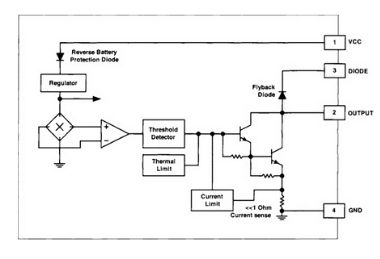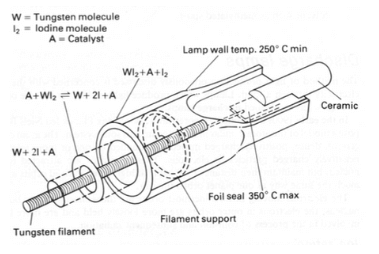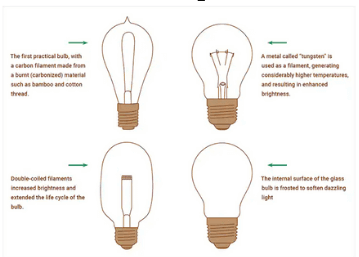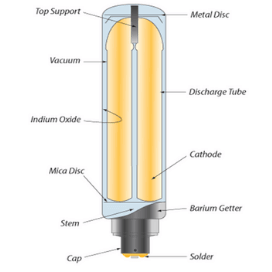Tunnel Lighting Design And Requirements
Tunnel lighting is necessary to solve the problem of abrupt adaptability of the environment inside the tunnel. It is necessary to balance the adaptability of the inside and outside luminance for the person entering or exiting the tunnel. This design is based on certain critical length of the tunnel.
Why Tunnel Lighting is Needed?
At night a tunnel may be lighted in such a way that it would be similar to a stretch of open road.
Again the visual performance and visual comfort aspects of the tunnel lighting must be fulfilled.
Difference between Tunnel Lighting and Road Lighting
If we compare the night time requirements of the tunnel lighting with road lighting, we will see that the requirements of the tunnel lighting must be satisfied in critical length of the tunnels in day time specially.
But in case of road lighting, demanding factors for lighting scheme are involved at night time only.The main problem of adaptability is in day time with respect to the inner condition of tunnel. When the human eye is adapted to the daytime brightness, it will be unable to function properly with relatively low luminaires luminance in a tunnel entrance suddenly.But in case of road light, there is no such abrupt luminance adaptability problem as it takes a long time to go for dark periphery from daylight.
Adaptability Criteria of Tunnel Lighting Design
On entring, the lighting in the first part of the tunnel must be related to the adaption state of the eye.
Luminance would be quite adequate for a dark adapted eye at night inside the tunnel.
The luminaires should be so arranged that subsequent transition from the highest to lowest luminance levels is made gradually in order to give the eyes time to adapt.
What is 40 m Length Rule for Tunnel Lighting?
The critical length of the tunnel generally provided is about 40m. This length is arrived at as follows.
As per the figure, in 40m rule it can be said that
Sufficient daylight is allowed to enter the tunnel over a distance of about 15 m.
The distance between the object at the entrance of the tunnel and the lightened road surface inside the tunnel is not longer than 15 m.
Tunnel front road surface must be enlightened by day light such that an object on this road gets visible.
The height of the tunnel entrance must be 200 cm high, so an object at the tunnel entrance will be clearly visible when it is viewed from a point 100 m in front of the tunnel and 1.5 meter above the road surface.
Rest 25 m out of 40 m is taken in lighting design for gradual luminance adaptability level of human eyes. 25 m is the minimum length inside the tunnel. It may be more than 25 m.
This 40 m rule of tunnel lighting applies only to straight level tunnel that is not carrying a heavy traffic loading.
Special tunnel lighting should be provided if
There is a curve in the tunnel or in the tunnel approach road,
The dips or the sight of the exit is frequently lost due to the presence of interviewing vehicles.
Classification of Inside Road Length of Tunnel
The tunnel inside road length is divided into four zones. They are
Threshold zone
Transition zone
Interior zone
Exit zone
Threshold Zone
Threshold zone is the starting portion of the tunnel. The walls and road surface in the threshold zone in anyone’s path must be seen against any obstacle.
Let us notice what happens in this zone.
When a driver is approaching a tunnel entrance, his eyes are adapted already to the high level day time luminance.
Again, the luminance level inside the tunnel is much lower than that of outside. So no object or no details of its interior will be visible.
So the threshold zone of a long tunnel requires special lighting during the daylight. It is needed in order to maintain the visual reliability for an approaching driver at an acceptable level.
What is the Luminance Level at Threshold Zone?
An investigation had been performed with tunnel lighting. It was discovered that an object with dimensions 20 cm × 20 cm is enough to be visible from a distance of 100 m when it is in the threshold zone. The outside adaptation luminance has influence on luminance needed in the threshold zone in order to see any object inside the tunnel.
The figure given below is taken from the technical investigation of CIE.

Luminance in the threshold zone gives the variation in the luminance contrast. It is over a range of values 7 Lux/cd/sq-m.
The figure above shows that outside adaptation luminance level is greater than about 100 cd/sq-m.
The luminance level (Lth) in the threshold zone should be equal to or greater than 0.1 times the adaptation luminance (La).
What Happens for a Moving Observer with Non Uniform Luminance in Threshold Zone?
In practice, of course, the luminance of the surroundings of a tunnel entrance is not uniform.
When an observer approaches towards a tunnel, the relative dark tunnel entrance and its surrounding lightened occupancy will be caught in driver’s total field of view. When he just enters the tunnel with already adapted outer side day light brightness, his eyes cannot adapt the brightness of inside tunnel. But adaptation of the driver’s eyes is continuously changing. But after a short while of his approaching, luminance distribution inside the tunnel will be adapted but with time lag.
What is the Threshold Zone Length?
The threshold zone length must be equal to the stopping distance from the start of tunnel entrance including extra distance sufficient for an object with proper back ground luminance.
Stopping distance is the safest distance from the point of taking decision to stop inside the tunnel.
In this length, obstacle must be clearly visible to a driver approaching the tunnel entrance.
Transition Zone
After the threshold zone, transition zone is calculated. The adaptation luminance at the transition zone is achieved easily by the viewers.
Before transition zone, somewhere between the stop decision point and the tunnel entrance, the luminance within a driver’s field of vision starts to decrease rapidly. This causes a change in the adaptation state of the eyes. So in the transition zone, adaptation forhuman eyes is very easy.
The luminance gradient in the transition zone can be tolerated.
There is yet no accurate information on how the value luminance should be sustained in practice for drivers who are much closer to the tunnel entrance than the stop decision point.
Above figure shows the permissible course of the luminance in a tunnel for a driving speed of 80 km/h relative to the equivalent adaptation luminance at the stop decision point.
Where,
Lst is the equivalent adaptation luminance at the stop decision point,
Lth is the threshold zone luminance,
Ltr is the transition zone luminance,
dr is the safe driver stopping distance (100 m at 80km/h),
dt is the distance of transition point from tunnel entrance (10m),
db is the distance between standard 20 cm square object and end of threshold zone needed to form an object background assuming a standard eye height of 1.5 m and a viewing distance equal to the safe driver stopping distance.
In practice smooth luminance reduction curve can be stepwise approximated in the transition zone.
Interior Zone
Interior zone starts just after transition zone and before exit zone. The general feature of this zone is given below.
In the transition zones of the long tunnels, usually the luminance level is kept constant.
In this interior zone, adaptation to the eyes is not necessary.
But it is necessary to arrange a suitable level of luminance which is fairly high compared to the level needed on an open road at night.
At night, the lighting level in a tunnel needs to be higher than that on the open road. The reason for this is that in a tunnel there is less spaces to correct an error in the judgment of lateral distance, less space to avoid obstacle, and if an accident does occur, the consequence are likely to be more severe.
Generally, luminance levels of 5 cd/ sq-m to 20 cd/sq-m are recommended for tunnels longer than 1 kilometer, where more time is available for adaptation than in short tunnels. Where large amounts of dust and smoke (exhaust fumes) are to be expected, the lighting level should be high enough to compensate for the loss visibility caused by this.
Exit Zone
In exit zone, adaptation of low to high levels of luminance practically takes place instantaneously. It is because; obstacles in the exit zone will stand out clearly against the bright exit. So no extra adaptation lighting in the exit zone is called for.
If the time is night time, a viewer would see the outside portion of the tunnel through this tunnel at exit zone as a black hole if there is no road light luminaire outside the tunnel at night. So at night the danger of the black hole effect occurring at the tunnel exit is present. In order to avoid this problem, road lighting along this stretch of the road is required. The road lighting should cover a stretch of 20 m to 300 m, and should gradually decrease in level.
Statement: Respect the original, good articles worth sharing, if there is infringement please contact delete.
Welcome to our electricity community! Established to facilitate the exchange and cooperation in the electricity industry and bridge professionals, enthusiasts, and related enterprises.





